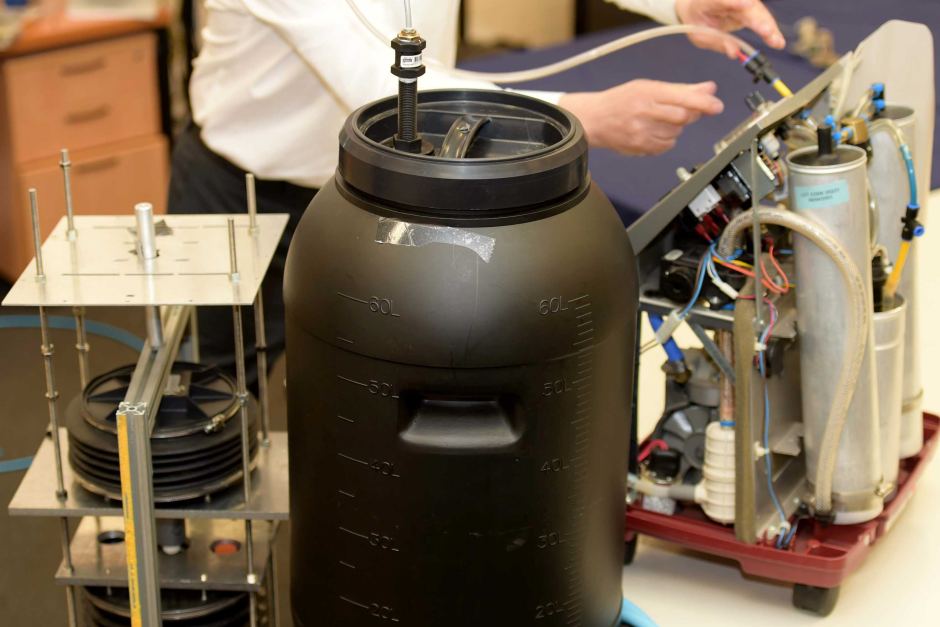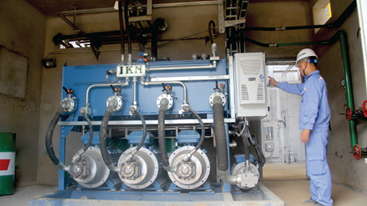Saturday, 27/07/2024 | 09:26 GMT+7
Pneumonia kills more young children than any other infection according to the World Health Organisation, and was responsible for the deaths of one million children under the age of five in 2013.
The project is being funded by the Bill and Melinda Gates Foundation which has provided $100,000 to develop the machine, with the possibility of contributing $1 million if it is proven to work.
Melbourne University physicist Roger Rasool, who is leading the development team, said the machine would run on renewable energy during a blackout.
"So the minute the power fails, our low-pressure oxygen store will cut in and deliver the oxygen," he said.
"[The machine will work] for up periods up to eight or 10 hours whilst there may be no power, just using renewable energy at that point.
"Typically, if you have a young child with pneumonia and you provide them with oxygen for 48 hours, then 75 per cent of them basically recover quite well without any other intervention.
"If you don't provide them with any oxygen, they don't.
"So our challenge is to try to ensure that we can provide up to two day's worth of oxygen for any of those needs."
Associate Professor Jim Black spent a decade working in remote health clinics in Mozambique and said many children died in the first few days of contracting pneumonia.
"It's very sad to see because it's something that in Australia is relatively straightforward to treat," he said.
"You give the child antibiotics and you give them oxygen to tide them over until the antibiotics begin to work.
"The striking thing in the remote African setting is there isn't oxygen available.
"You give the child the antibiotics, you nurse them as well as they can, but you still lose quite a lot of them because they're just not able to get through that really critical first couple of days."

Key to success is making machine cheap
Professor Black said the oxygen machine would not be effective in developing countries unless it was cheap.
"What makes it an interesting challenge to the technical people is not so much [the question of whether you] can make an oxygen concentrator that will work through a power blackout - that can be done," he said.
"But can you make an oxygen concentrator that works through power blackouts that's cheap enough to be affordable in that sort of small health facility?
"That's what's made this project really interesting. We're absolutely sure we can do it."
Professor Rassool said the team must prove the machine will work in order to secure the backing of the Bill and Melinda Gates Foundation.
"One possibility is that they will actually provide what they call transitions of scale funds. So I think the funding is there," he said.
"The thing that we have to meet is this very simple KPI - we have to demonstrate how many lives this technology can save.
"My gut feeling is when we get out in the field, we'll have a much better feeling, but tens of thousands of lives is what we're aiming for.
"In the first instance, we need to just get involved and save one or two to actually take us to the next step."
The machine will be put to the test in clinics in East Africa in August.
Mai Linh








.jpg?w=367&h=206&mode=crop) Notice for Contracts award for Support to Industrial Enterprises for Energy Audits and Preparation of Feasibility Studies (Package No. C2.2.4)
04/06/2024
Notice for Contracts award for Support to Industrial Enterprises for Energy Audits and Preparation of Feasibility Studies (Package No. C2.2.4)
04/06/2024
 Training Courses for Energy Managers and Energy Auditors
Training Courses for Energy Managers and Energy Auditors
 Vietnam Energy Outlook Report – Pathway to Net Zero
Vietnam Energy Outlook Report – Pathway to Net Zero
 Long Son Cement saves 30% of electricity consumption thanks to heat recovery
Long Son Cement saves 30% of electricity consumption thanks to heat recovery
 Expression of Interest: C2.1.15: Development of Energy-Efficient Technology Catalogs for the Industrial Sector
Expression of Interest: C2.1.15: Development of Energy-Efficient Technology Catalogs for the Industrial Sector
 Optimizing Compressed Air Systems for Southern Industrial Enterprises
Optimizing Compressed Air Systems for Southern Industrial Enterprises
 The Ministry of Industry and Trade Review the Energy Efficiency and Conservation activities in Lao Cai.
The Ministry of Industry and Trade Review the Energy Efficiency and Conservation activities in Lao Cai.
 EOI Extension: C2.2.2: Review and update for current EE benchmarking for 2 sub-industrial sectors
EOI Extension: C2.2.2: Review and update for current EE benchmarking for 2 sub-industrial sectors